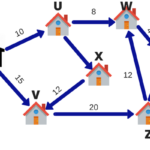The plant layout in production planning/ management is the physical arrangement of buildings, machinery, equipment, work places and other facilities of production in order to process the product in the most efficient manner.
According to Muther, the basic principles of best layout are integration, minimum movements and material handling, smooth and continuous flow, safe and improved environment and flexibility.
Following are the three types of plant layout :
1. Process layout. The process layout is also known as functional layout or analytical layout. This type cf layout is employed where
(a) low volume of production is required,
(b) similar jobs are manufactured on similar machines, and
(c) machines are arranged on functional basis.
The process layout has the following drawbacks :
(a) More floor space is required.
(b) Production control is more difficult and costly.
(c) Routing and scheduling is more difficult.
(d) Handling and back-tracking of materials is too much
2. Product layout. The product layout is also known as synthetic layout. This type of layout is best suited where one type of product is produced and the product is standardized. It is used for mass production of the product. The product layout lowers overall manufacturing time, requires less space for placing machines and utilizes machine and labor better. In the product layout, specialized and strict supervision is required and machines cannot be used to their maximum capacity. The manufacturing cost rises with a fall in the volume of production.
The product layout is suitable for automobile manufacturing concern.
3. Fixed position layout. The fixed position layout is also known as static product layout. In this type of layout, the product is so large that it cannot be moved from one location to another location, but tools, material and labor are moved to the product to perform specific operations. This type of layout is used for manufacturing ships, aeroplanes, steam turbines etc



